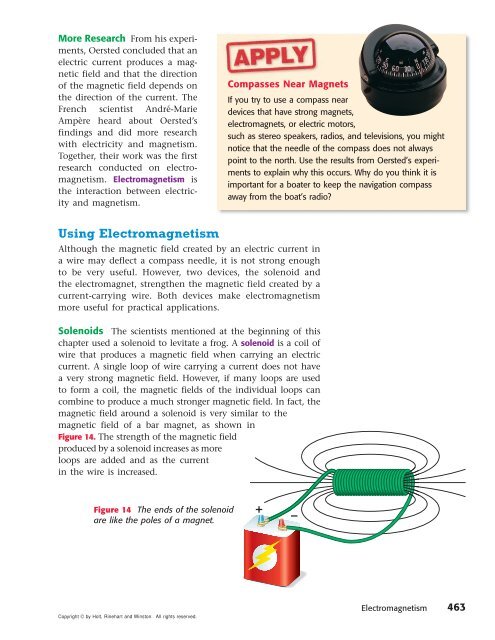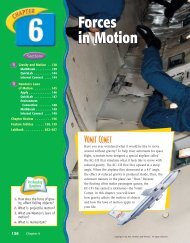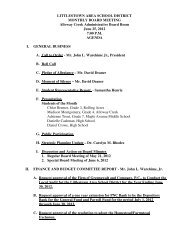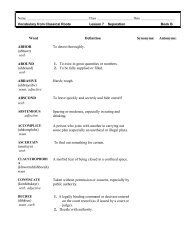Electromagnetism Electromagnetism
Electromagnetism Electromagnetism
Electromagnetism Electromagnetism
You also want an ePaper? Increase the reach of your titles
YUMPU automatically turns print PDFs into web optimized ePapers that Google loves.
More Research From his experiments,<br />
Oersted concluded that an<br />
electric current produces a magnetic<br />
field and that the direction<br />
of the magnetic field depends on<br />
the direction of the current. The<br />
French scientist André-Marie<br />
Ampère heard about Oersted’s<br />
findings and did more research<br />
with electricity and magnetism.<br />
Together, their work was the first<br />
research conducted on electromagnetism.<br />
<strong>Electromagnetism</strong> is<br />
the interaction between electricity<br />
and magnetism.<br />
Using <strong>Electromagnetism</strong><br />
Although the magnetic field created by an electric current in<br />
a wire may deflect a compass needle, it is not strong enough<br />
to be very useful. However, two devices, the solenoid and<br />
the electromagnet, strengthen the magnetic field created by a<br />
current-carrying wire. Both devices make electromagnetism<br />
more useful for practical applications.<br />
Solenoids The scientists mentioned at the beginning of this<br />
chapter used a solenoid to levitate a frog. A solenoid is a coil of<br />
wire that produces a magnetic field when carrying an electric<br />
current. A single loop of wire carrying a current does not have<br />
a very strong magnetic field. However, if many loops are used<br />
to form a coil, the magnetic fields of the individual loops can<br />
combine to produce a much stronger magnetic field. In fact, the<br />
magnetic field around a solenoid is very similar to the<br />
magnetic field of a bar magnet, as shown in<br />
Figure 14. The strength of the magnetic field<br />
produced by a solenoid increases as more<br />
loops are added and as the current<br />
in the wire is increased.<br />
Figure 14 The ends of the solenoid<br />
are like the poles of a magnet.<br />
Copyright © by Holt, Rinehart and Winston. All rights reserved.<br />
Compasses Near Magnets<br />
If you try to use a compass near<br />
devices that have strong magnets,<br />
electromagnets, or electric motors,<br />
such as stereo speakers, radios, and televisions, you might<br />
notice that the needle of the compass does not always<br />
point to the north. Use the results from Oersted’s experiments<br />
to explain why this occurs. Why do you think it is<br />
important for a boater to keep the navigation compass<br />
away from the boat’s radio?<br />
<strong>Electromagnetism</strong> 463





